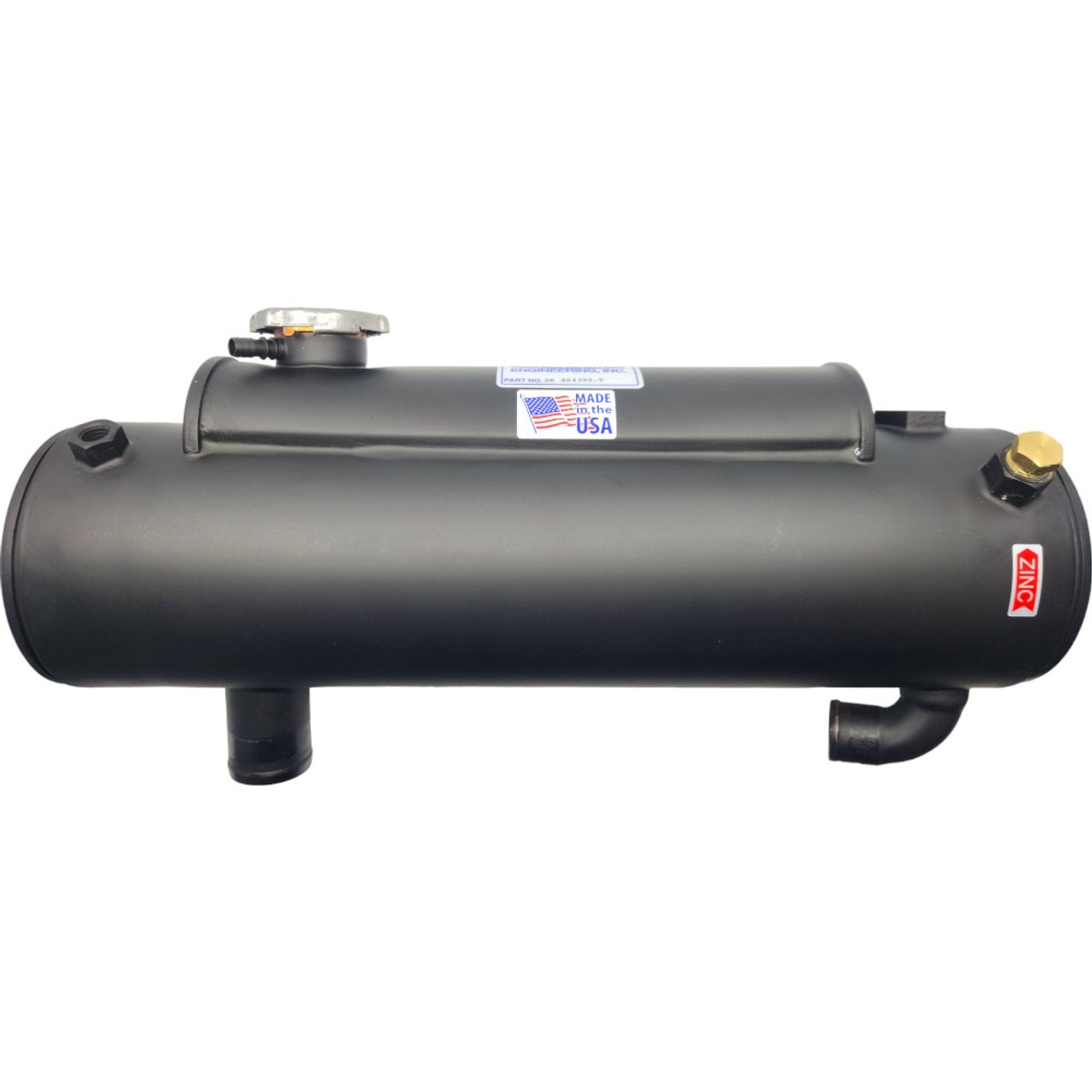Introduction
MerCruiser heat exchanger is an essential component in the closed-loop cooling systems of MerCruiser inboard and sterndrive marine engines. Designed to handle the harsh marine environment, this exchanger separates the engine’s internal coolant from corrosive seawater or raw water, allowing the engine to operate at optimal temperatures without the risks of rust, corrosion, or scale buildup. As an advanced form of indirect cooling, the MerCruiser heat exchanger significantly enhances engine efficiency, reliability, and service life, especially in saltwater applications. Whether you’re running a leisure cruiser or a high-performance boat, using a properly maintained heat exchanger is crucial for preserving engine health and performance.
How It Works – Operating Principle
The MerCruiser heat exchanger uses the principle of indirect heat exchange:
- Engine coolant (typically antifreeze mixed with water) circulates through the engine block, absorbing heat from engine operation.
- The hot coolant exits the engine and enters the heat exchanger tubes.
- At the same time, raw water (drawn from a lake, river, or ocean) is pumped into the shell side of the exchanger.
- The raw water flows around the tubes containing hot coolant.
- Heat transfers from the hot coolant to the raw water without the two fluids mixing.
- The cooled engine coolant returns to the engine.
- The heated raw water is expelled overboard, usually through the exhaust outlet.
This method maintains a consistent engine temperature and improves performance, while protecting the engine from corrosive seawater.
Construction and Materials
Main Components:
- Shell – Outer body containing the raw water flow.
- Tube bundle – Small diameter tubes through which the engine coolant flows.
- End caps – Allow access for cleaning and inspection.
- Zinc Anodes – Sacrificial metal rods placed inside to protect against galvanic corrosion.
Common Materials:
- Copper-Nickel (CuNi) – Excellent marine corrosion resistance; widely used.
- Stainless Steel – Durable and resistant to high temperatures; used in performance models.
- Bronze – Traditional marine material used in OEM units.
Types of Cooling Systems in MerCruiser Engines
Raw Water Cooling System
- Raw water is pumped directly through the engine.
- Not ideal for saltwater use due to corrosion risks.
Closed-Loop Cooling with Heat Exchanger
- Heat exchanger keeps engine coolant and seawater separate.
- Two system configurations:
Half Closed Cooling System
- Coolant circulates only through the engine block.
- Exhaust manifolds and risers are cooled by raw water.
Full Closed Cooling System
- Coolant circulates through both the engine and the exhaust manifolds.
- Raw water is used only in the heat exchanger, never entering engine or exhaust.
Advantages of Using a MerCruiser Heat Exchanger
- Corrosion Protection – Keeps seawater out of the engine and manifolds (in full systems).
- Longer Engine Life – Reduces scale buildup and internal rust.
- Stable Engine Temperature – Prevents overheating during high-load operation.
- Reduced Maintenance – Less need for descaling or salt flushing.
- Cold Climate Friendly – Compatible with antifreeze, preventing freeze damage.
- Ideal for Saltwater Use – Especially critical for boats used in oceans or brackish water.
Maintenance Tips
Regular maintenance extends the life and efficiency of the heat exchanger:
Routine Checks:
- Inspect for external leaks, cracks, or salt buildup.
- Check for coolant level and top off with appropriate mix.
- Clean raw water strainers to prevent debris from entering the exchanger.
Cleaning:
- Flush raw water side periodically with fresh water.
- Use a descaling solution or vinegar soak if scaling is detected.
- Remove end caps and clean tube bundle as needed.
Zinc Anode Maintenance:
- Replace sacrificial zinc anodes regularly to prevent internal corrosion.
- Frequency depends on water conditions (every 3–6 months in saltwater).
Replacement and Upgrade Options
OEM Replacements:
- Offered by MerCruiser / Mercury Marine.
- Designed to fit specific engine models and horsepower ratings.
Aftermarket Brands:
- Seakamp Engineering
- Mr. Cool Marine
- Glacier Bay
- Monitor Products
Selection Criteria:
- Match by engine type, cooling system type (half or full), and engine size (e.g., 4.3L, 5.0L, 5.7L, 6.2L, 8.1L).
- Ensure compatibility with hose fittings, mounting points, and anode locations.
Conclusion
MerCruiser heat exchanger plays a vital role in protecting marine engines from the damaging effects of saltwater exposure and overheating. With its durable construction, high heat transfer efficiency, and compatibility with closed-loop cooling systems, it ensures long-term engine durability, smoother operation, and reduced maintenance costs. Regular inspection, proper cleaning, and timely replacement of components like zinc anodes and tube bundles will keep the exchanger performing efficiently. Whether you’re upgrading or replacing, choosing the right MerCruiser heat exchanger for your specific engine model is key to maximizing your boating experience and engine longevity.

